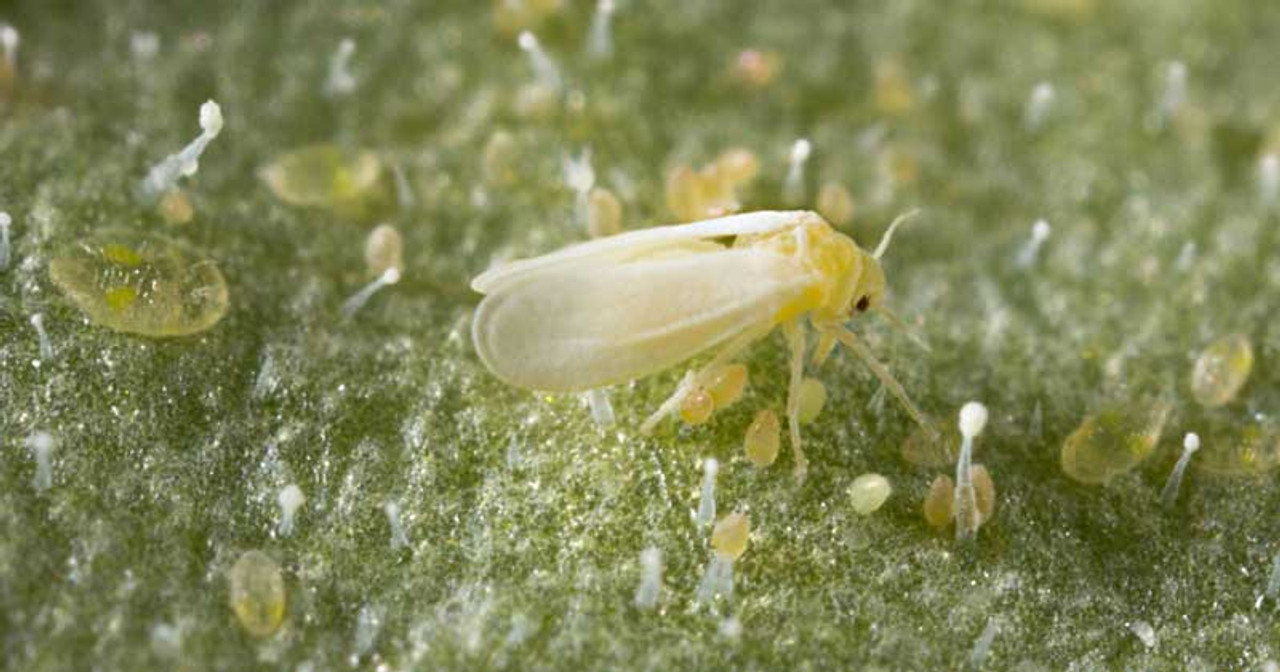White Fly Trialeurodes vaporariorum, Bemisia tabaci

Whiteflies are not true flies, but belong to the order Hemiptera (true bugs). Together with aphids and scale insects, they belong to the division Sternorrhyncha. The whiteflies form the family Aleyrodidae. The most common species are the greenhouse whitefly, Trialeurodes vaporariorum, and the tobacco whitefly, Bemisia tabaci. Both are widespread, and are broadly comparable in outline.
FAQs About White Fly
Whitefly is a piercing/sucking insect that is common in all horticultural/agricultural areas and is known to vector certain viruses amongst plant families. Whitefly can originate from outside of the growing facility on landscaping or agricultural plants where they may overwinter protected from the elements. They may also be brought in on propagated plants from another facility. There is increasing evidence that over-fertilization of plants (specifically Nitrogen) can benefit Whitefly populations by providing more nutrients to the pest.
The typical agricultural/horticultural Whitefly species will quickly grow to serious populations quickly due to their short lifespan. Every female Whitefly can lay between 100-200 eggs in her lifetime, depending on host plant and climate. With a three-week lifecycle, the population exponentially grows if no control actions are taken. An adult Whitefly can live for two months or more under common horticultural conditions.
Since Whitefly populations grow so quickly, prevention is key to their control. Inspect incoming plant material and treat with natural enemies and preventative sprays. Hang yellow monitoring cards above the canopy of the crop and take counts of trapped Whitefly weekly to measure populations quantitatively. Introduce specialized natural enemies like Amblyseius swirskii, Encarsia formosa, or Eretmocerus eremicus preventatively before pest pressure is detected. Hang larger sticky cards or tape to trap adults before they can lay eggs in the crop.
There are two main species of Whitefly that commonly affect agricultural/horticultural crops: Greenhouse Whitefly (Trialeurodes vaporariorum) and Tobacco Whitefly (Bemesia tabaci). While these pests may look similar to the untrained eye, they can be distinguished by several characteristics: Greenhouse Whitefly wings lay flat against the body, they normally lay eggs at the top of the plant, and their larval/pupal stages typically produce small hair-like filaments while Tobacco Whitefly wings form a "tent" shape on the body, will lay eggs throughout the structure of the plant, and produce slightly yellow larvae/pupae with no hair-like filaments.
Questions About White Fly?
Our team of experts is at your disposal to help you make the best decisions according to the particular needs of your crop. Do not hesitate to call us during normal business hours at (503) 342-6698 or write us through our chat to provide you with personalized service. We will be more than happy to help you!


